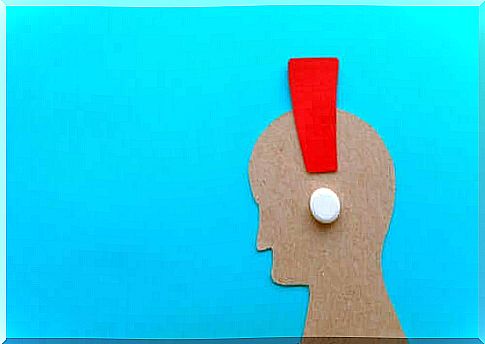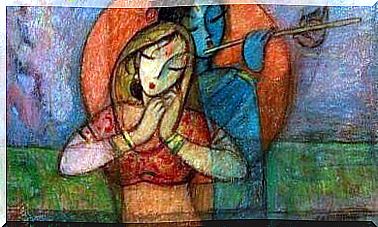When Do We Speak Of Co-addiction?

Co-addiction is a very complex behavior that affects both the person living with an addiction but also those closest to them. It can then have important consequences in the smooth running of everyone’s daily life, causing the person to lose his or her own means to cope with daily difficulties.
It is therefore important to know what co-addiction is and how it can affect us. Not only for oneself, but also to detect it in our surroundings.

What is co-addition?
Co-addiction is defined as a dependency relationship in which at least one member of the relationship is subject to an addiction to any substance. Consequently, the addiction causes a change in the behavior of those close to the addict. This then causes a new way of functioning within the relationship.
Research has shown that women are the most likely to suffer from co-addiction. Especially mothers and wives. This can indeed be explained by the cultural evolution of our society during the last decades. Indeed, women often take on the role of caregivers. In their efforts to meet the needs of their loved ones, they sometimes end up forgetting themselves.
It is the families of people who frequent Alcoholics Anonymous associations who coined the term co-addiction. Therapies of this type indeed elicit very strong physical, emotional and psychological reactions within these family nuclei.
People prone to addictions are often unable to express their emotions. It is also very difficult for them to resolve their personal and interpersonal conflicts. Most efforts are made to control their addictive behavior. Everything revolves around this issue. Thus, a dynamic is created in which the addict, because of his behavior and his manipulations, ends up controlling the life of the co-addict (s).
The types of co-addition?
It is considered that there are two types of co-addictions. Each has its own characteristics and implications.
Codependency
In the case of codependency, a person has an unhealthy relationship of dependence or interdependence with an individual suffering from an addiction. It is important to stress that, in this type of co-addiction, the co-dependent person is not himself addicted to any type of substance.
This situation results from the stress associated with living with an addict and dealing with the difficulties that they encounter. Moreover, this phenomenon is gradual. That is, codependency increases and intensifies over time. The main characteristics of codependency are as follows:
- Spend a lot of time trying to find solutions for yourself and for the other person. In particular, in the event of difficulties
- Give priority to the addict, to the point of ignoring their own needs
- Having difficulty dealing with separation and anxiety
- Ignoring their privacy and their own needs
- Have a tendency to engage in relationships with people who are impulsive, addicted to drugs, and have personality disorders
Bio-dependence
The second type of co-addiction is called bio-dependence. This concept can be defined as an addiction to addiction. It is a relational dependence developed by an addicted individual.
In this case, there is a set of attitudes, disorders and behaviors which, beyond a specific dependence, create another dependence on people or situations. This second dependence is sociopathic. It significantly conditions the daily activities of the two people linked by the co-addiction relationship.
The bio-dependent person generally adopts a passive attitude. In addition, she tends to lose her autonomy on purpose.
As a result, she no longer makes any decisions and gradually becomes a person with a disability. The relationship she then has with the person on whom she depends is similar to the one she has with the substance to which she is addicted.
However, it is interesting to note that this loss of autonomy disappears when it comes to his addiction itself. Indeed, the addict is able to implement actions to seek and find the substance to which he is dependent. Among the clinical characteristics of bio-dependent people, we can mention in particular:
- Lack of recognition of the problem
- A notable lack of interest in decision-making and a decrease in autonomy
- Seeking sensations with the spouse that are similar to those encountered with the addictive substance
- The obsessive search for a spouse. Note that this spouse is the one who causes bio-dependence
Why do we come to a co-addiction situation?
First of all, remember that co-addiction occurs when one of the family members is dependent on an addictive substance. It is therefore common for people with this addiction to end up adopting behaviors that reinforce their own addiction.
Obviously, this perverse logic implies a set of relational dynamics which are not healthy. Thus, when the co-addict is confronted with difficulties due to the addiction, he may feel responsible. Although it is obviously not.
In other words, she will begin to do tasks and take on roles that are actually incumbent on the addict. This reinforces the person in a situation of dependence to always rely more on their spouse.
The result is that the person then begins to suffer from anxiety and stress. Likewise, she may feel ashamed. And this, because of the attitude of his addicted spouse but also because of his own behavior.
In addition, the fear of not knowing if you are doing things right or the powerlessness of not being able to do them are mingled with these feelings. Finally, it is common to develop a feeling of guilt because the person is afraid of encouraging addiction by their own attitude.

A final word on co-addiction
The addiction does not only affect the person who is the victim of the addiction. The perverse consequences of addiction indeed go far beyond. On the other hand, everything seems to indicate to us that the stronger the addiction, the higher the chances of seeing a co-addiction appear in the immediate environment of the addict.
When such limits are reached, the consequences can then be much more serious. It can even go so far as to become one of the aspects involved in addiction. In these cases, the best thing to do is still to seek the help of a specialist in the form of psychological support. The professionals are in fact always there to advise and guide you.









